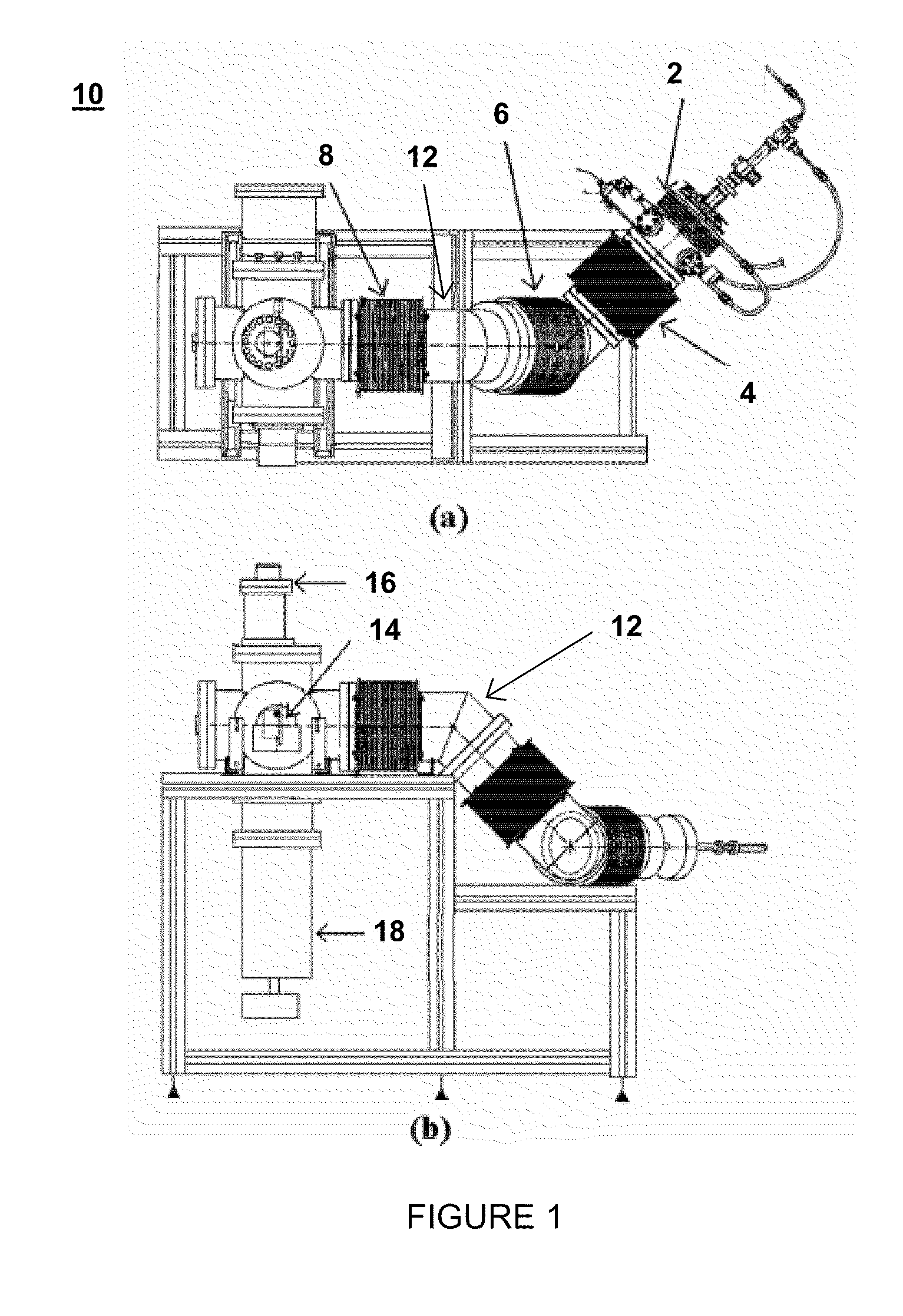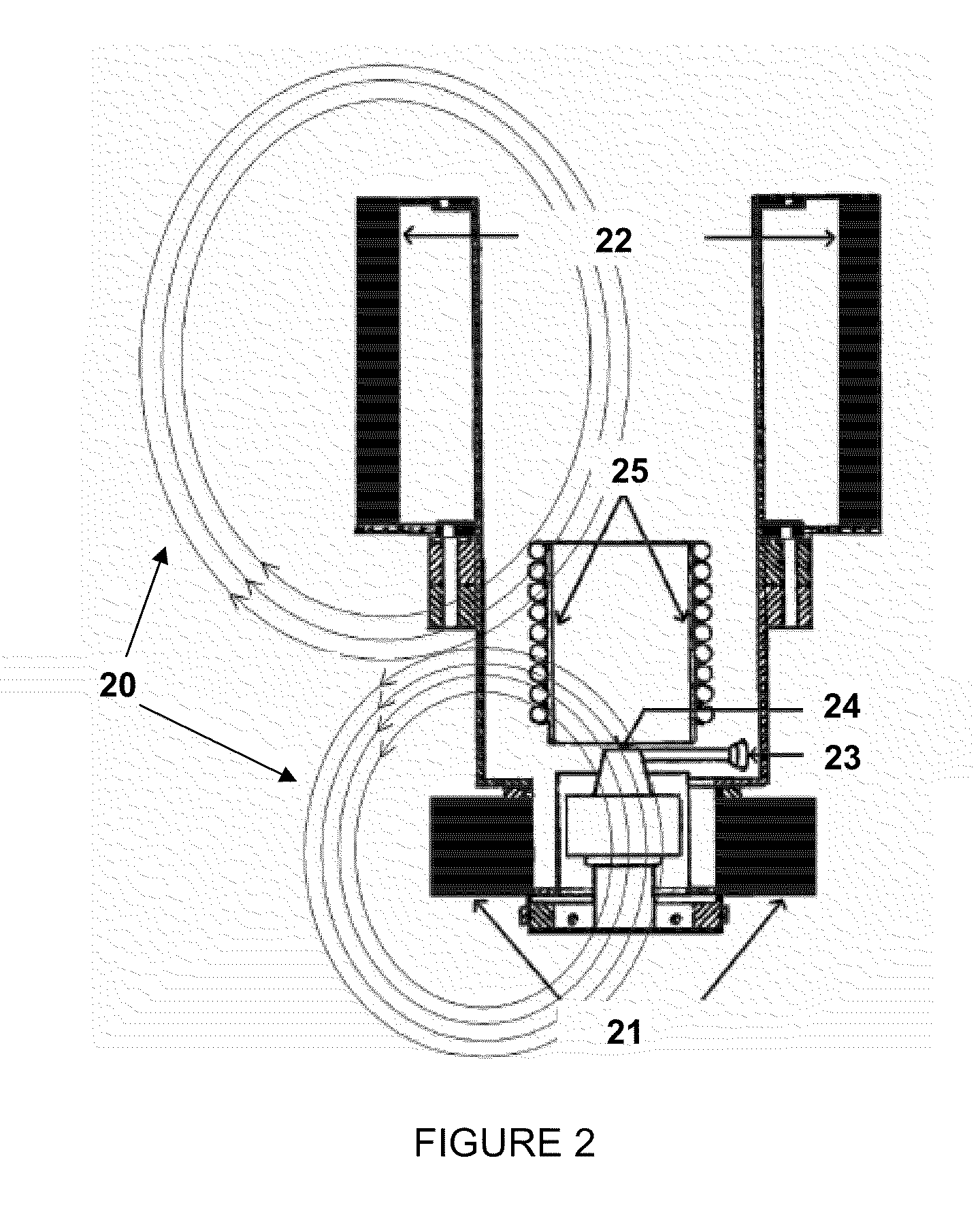Systems and Methods for Surface Modification by Filtered Cathodic Vacuum Arc
a vacuum arc and filtering cathode technology, applied in the field of system and method for surface modification by filtering cathode vacuum arc, can solve the problem of a-c overcoat space being a major obstacl
- Summary
- Abstract
- Description
- Claims
- Application Information
AI Technical Summary
Benefits of technology
Problems solved by technology
Method used
Image
Examples
example 1
FCVA on Silicon Substrates
I. Introduction
[0084]Filtered cathodic vacuum arc (FCVA) deposition and the properties of thin films synthesized by FCVA were studied. FCVA was studied by holding the process time, which is linearly related to the ion fluence, constant and adjusting the substrate bias. X-ray photoelectron spectroscopy (XPS) was used to examine carbon bonding changes in terms of implanting ion fluence and substrate bias. Film thickness and composition depth profiles were determined from T-DYN simulations and X-ray reflectivity (XRR) measurements. The film roughness, measured with an atomic force microscope (AFM), was analyzed in terms of atomic carbon bonding and carbon atom diffusion at the film surface. The nanomechanical properties of the films were detected with a surface force microscope (SFM).
II. Experimental Procedures
[0085]A. Synthesis of carbon films by FCVA
[0086]Synthesis of carbon films on Si(100) substrates was performed with a direct current (dc) FCVA system by ...
example 2
FCVA on a Magnetic Recording Medium
I. Introduction
[0105]Surface modification of the magnetic recording medium of hard disks by FCVA treatment was examined. The magnetic storage layer was exposed by sputter etching the overlying carbon overcoat. Sputter etching was performed in a high-vacuum atmosphere to minimize oxidation of the underlying magnetic storage layer. The exposed magnetic storage layer was subjected to energetic C+ ion bombardment under conditions of zero and −100 V pulsed (25 kHz frequency) substrate bias. The effects of FCVA treatment conditions on carbon implantation profiles, carbon atom hybridization, surface roughness, and nanomechanical properties of the surface-modified hard disk magnetic recording medium was analyzed using T-DYN, XPS, AFM, and SFM.
II. Experimental Procedures
[0106]A. Sample Preparation
[0107]Unlubricated hard disks having a diameter of 3.5 in. were cut into 10×10 mm2 samples. The magnetic storage layer was composed of 61-63 atomic % Co, 12-15 ato...
PUM
| Property | Measurement | Unit |
|---|---|---|
| Thickness | aaaaa | aaaaa |
| Magnetic field | aaaaa | aaaaa |
| Magnetic field | aaaaa | aaaaa |
Abstract
Description
Claims
Application Information
 Login to View More
Login to View More - R&D
- Intellectual Property
- Life Sciences
- Materials
- Tech Scout
- Unparalleled Data Quality
- Higher Quality Content
- 60% Fewer Hallucinations
Browse by: Latest US Patents, China's latest patents, Technical Efficacy Thesaurus, Application Domain, Technology Topic, Popular Technical Reports.
© 2025 PatSnap. All rights reserved.Legal|Privacy policy|Modern Slavery Act Transparency Statement|Sitemap|About US| Contact US: help@patsnap.com



